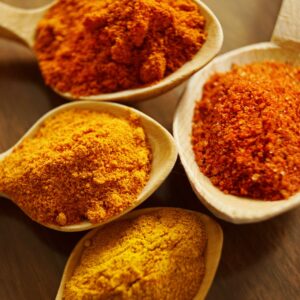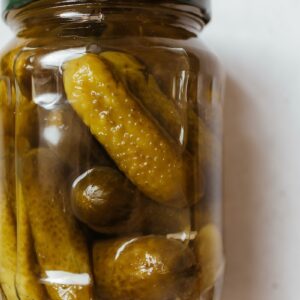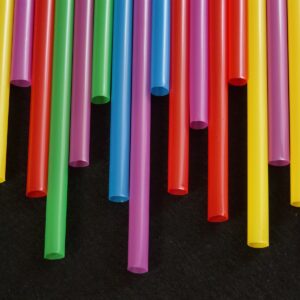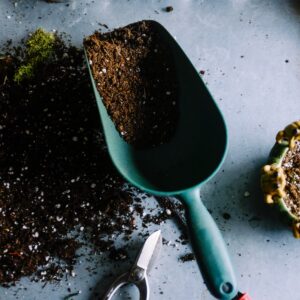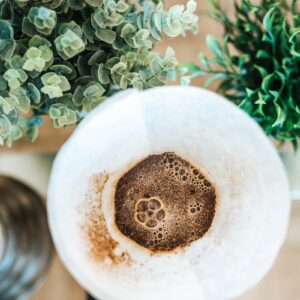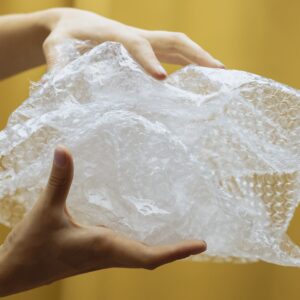
You’ve lost a plant and find yourself asking, “Can I reuse this soil?” Many aren’t aware that reusing potting soil can be a great way to reduce waste and save money. This article will guide you through the process of revitalizing old potting soil, making it reusable for your next plant venture.
Ready to go green? Let’s dive in together!
Key Takeaways
- Reusing soil from a dead plant is possible, but it comes with risks like pests and nutrient depletion.
- To reuse potting soil properly, sterilize it by baking in the oven or microwaving, then improve its quality by adding organic matter and/or perlite/vermiculite for better drainage.
- Assess the condition of the soil before reusing it to ensure there are no pests or diseases, and take precautions like removing roots/debris and testing pH levels.
- If reusing isn’t suitable, consider alternatives like purchasing new potting soil, making compost, using soilless mixes, trying hydroponics, or using garden soil with amendments.
Risks of Reusing Potting Soil

Reusing potting soil comes with certain risks, including the potential for pests and diseases to spread, nutrient depletion in the soil, and the possibility of soil compaction.
Pests and diseases
Bugs and sickness can live in old soil. Dirt from a sick plant can have bugs that harm other plants. These pests eat the roots and leaves of your plants. Also, some diseases in the soil stop new plants from growing well.
Diseases like root rot are hard to get rid of once they are present in soil.
Nutrient depletion
Plants need food to grow. They take this food from the soil. Over time, plants use up all the good stuff in the soil. This is called nutrient depletion.
Nutrient depletion makes it hard for new plants to grow well. Soil with few nutrients can make plants weak or sick. You have to add fresh nutrients back into old potting soil before you reuse it.
Soil compaction
Soil compaction is a big problem. It happens when soil gets squeezed tight. This makes it hard for roots to grow because water and air can’t get through. Packed soil stops plants from getting big and strong.
Your hands, feet, or tools may press the soil down by accident. To fix this, loosen up the soil before using it again!
Steps to Reusing Potting Soil
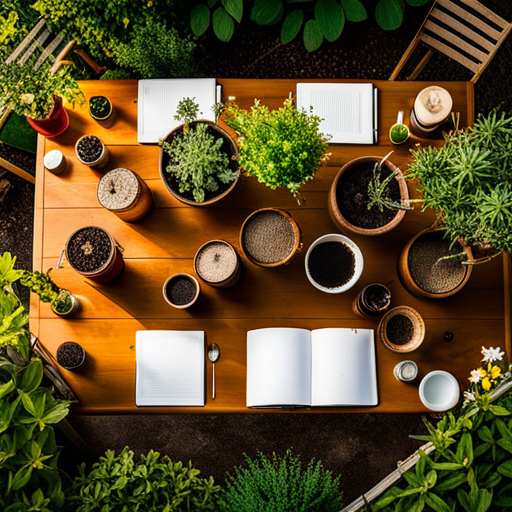
Sterilize the soil by baking it in the oven at 180°F for 30 minutes.
Sterilizing the soil
To reuse potting soil properly, it’s important to sterilize the soil first. Sterilizing the soil helps kill any pests or diseases that may be present. You can do this by baking the soil in an oven at 180 degrees Fahrenheit for about 30 minutes.
Alternatively, you can microwave the soil on high for five minutes in a microwave-safe container. Make sure to let the soil cool before using it again. This step is crucial in preventing any potential problems from affecting your new plants and ensuring a healthy growing environment.
Improving soil quality
To improve the quality of your potting soil for reuse, there are a few steps you can take. One important step is to aerate the soil by loosening it up and breaking apart any clumps.
This helps with drainage and allows roots to grow more easily. Adding organic matter like compost or aged manure can also help improve soil quality by providing essential nutrients and improving its texture.
Another method is adding perlite or vermiculite to improve drainage if needed. Additionally, you can mix in some slow-release fertilizer to replenish nutrients that may have been depleted over time.
Adding nutrients
To ensure that your reused potting soil is healthy for new plants, it’s important to add nutrients. This will replenish any nutrients that may have been depleted by the previous plant and promote healthy growth for the new one.
You can do this by mixing in organic materials like compost or aged manure, which are rich in natural nutrients. These additions will not only provide necessary nourishment but also improve the overall quality of the soil.
Remember to mix them thoroughly to distribute the nutrients evenly throughout the potting soil. By adding nutrients, you’ll give your plants a better chance at thriving in their recycled environment.
Assessing drainage
Checking the drainage of the soil is an important step when reusing potting soil. You want to make sure that water can properly drain through the soil, as excessive moisture can lead to root rot and other problems for your plants.
To assess drainage, simply pour some water into a pot filled with the recycled soil and see how quickly it drains. If it drains too slowly or retains too much water, you may need to amend the soil by adding materials such as perlite or sand to improve drainage.
This will help ensure that your plants thrive in their new home.
Can You Reuse Soil from a Dead Plant?
Yes, it is possible to reuse soil from a dead plant, but there are several factors and precautions to consider.
Factors to consider
When reusing soil from a dead plant, there are a few things to consider. First, assess the condition of the soil and determine if it is still suitable for reuse. Look out for signs of pests or diseases that could harm new plants.
Additionally, check if the soil has been depleted of nutrients and needs to be revitalized. Consider the drainage capabilities of the soil as well; if it doesn’t drain properly, it may lead to root rot in future plants.
By evaluating these factors, you can make an informed decision about whether or not to reuse the soil from a deceased plant.
Proper precautions
To reuse soil from a dead plant, there are some important precautions to take. By following these steps, you can ensure that the soil is safe and healthy for future use:
- Inspect the soil: Check for any signs of pests or diseases. If you see any, discard the soil instead of reusing it.
- Remove any roots or debris: Before reusing the soil, make sure to remove any remaining roots or plant material.
- Sterilize the soil: To kill off any pathogens or harmful organisms, sterilize the soil by baking it in the oven at 180°F (82°C) for 30 minutes.
- Test pH levels: Use a simple pH test kit to check the acidity or alkalinity of the soil. Adjust it as needed by adding amendments like lime or sulfur.
- Add organic matter: To improve the quality of the reused soil, mix in compost or well-rotted manure. This will replenish essential nutrients and enhance drainage.
- Avoid compacted soil: Break up any compacted clumps by loosening them with a garden fork. This will help with root growth and water absorption.
Benefits of reusing soil
Reusing soil from a dead plant can offer several benefits. First, it saves you money since you don’t have to buy new potting soil for your next plant. Second, the old soil may still contain some natural nutrients that can benefit your new plants.
Third, by reusing the soil, you reduce waste and promote sustainability. Finally, reusing potting soil allows you to maintain a consistent environment for your plants, which can contribute to their overall health and growth.
So before throwing away old potting soil, consider the potential benefits of giving it another chance in your garden or pots.
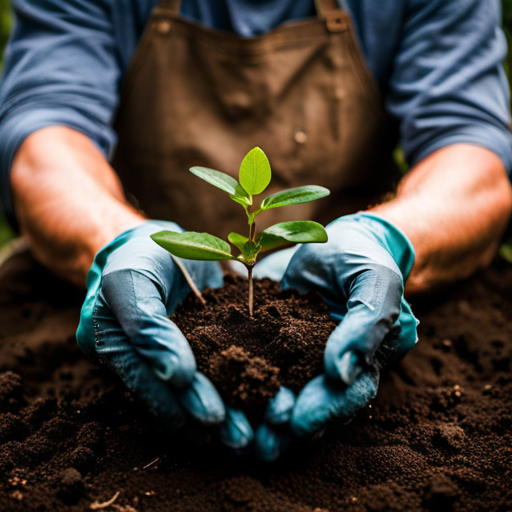
Final Thoughts on Reusing Potting Soil
Proper soil management is crucial for successful plant growth and sustainability. While reusing potting soil can be a cost-effective and eco-friendly practice, it’s important to consider the risks and take necessary precautions.
Additionally, there are alternative options available if reusing soil is not suitable. By following the step-by-step guide and understanding the factors involved in reusing potting soil, you can effectively revitalize old soil and promote healthy plant growth.
Importance of proper soil management
Proper soil management is crucial for the health and success of your plants. By taking care of your soil, you can ensure that it is nutrient-rich and provides a good environment for plant growth.
This means regularly adding organic matter, such as compost or mulch, to improve soil fertility. It also involves testing the pH levels of your soil and adjusting them if necessary to create optimal conditions for plant growth.
Additionally, proper soil management includes preventing erosion by using techniques like planting cover crops or using mulch to protect the soil from being washed away by rainwater.
Alternatives to using old soil
There are other options you can consider instead of reusing old potting soil. Here are some alternatives:
- Purchase new potting soil: If you’re unsure about the quality of your old soil or if it’s contaminated, buying fresh potting soil is a reliable option.
- Make your own compost: Composting your kitchen scraps and yard waste can provide nutrient-rich soil for your plants. This way, you’ll have a constant supply of fresh compost to use in your pots.
- Use soilless mixes: Soilless mixes, such as peat moss or coconut coir-based blends, can be an effective substitute for traditional potting soil. These mixes often come sterilized and packed with nutrients.
- Consider hydroponics: Hydroponics is a method of growing plants without soil. Instead, plants are grown in a nutrient-rich water solution. This eliminates the need for potting soil altogether.
- Try container gardening with garden soil: If you have access to garden soil that is free from contaminants and drains well, you can use it in containers instead of potting soil. However, make sure to amend it with organic matter like compost to improve its texture and fertility.
Conclusion
In conclusion, reusing soil from a dead plant can be done effectively by following the proper steps. Despite the risks of pests and nutrient depletion, you can sterilize the soil, improve its quality, add nutrients, and assess drainage to ensure it’s suitable for reuse.
Consider factors like the condition of the plant and take precautions to avoid spreading diseases. By reusing potting soil, you can save money and reduce waste while benefiting from natural nutrients present in old soil.
Proper soil management is important for successful gardening, but if reusing isn’t an option or you’re uncertain about safety, there are alternatives available.
FAQs
1. Can I reuse soil from a dead plant?
Yes, you can reuse soil from a dead plant, but it needs to be done properly to ensure the health of future plants.
2. How do I prepare the soil for reuse?
To prepare the soil for reuse, remove any debris or roots from the old plant and break up clumps. You may also need to amend the soil with compost or fertilizer depending on its condition.
3. Do I need to sterilize the reused soil?
It is recommended to sterilize reused soil to kill any potential pests or diseases. This can be done by baking it in an oven at 180°F (82°C) for about 30 minutes.
4. Can all types of potting soil be reused?
Not all types of potting soils are suitable for reuse as some may have become compacted or depleted of nutrients. It’s best to assess the quality of the soil before deciding whether to reuse it.
5. Are there any precautions I should take when reusing potting soil?
When reusing potting soil, make sure that it is well-draining and free from weeds or pests. Additionally, consider rotating crops and practicing proper hygiene practices like washing containers and tools between uses to prevent disease transmission.
